What could be so bad about going to an AM transmitter site on a peninsula off of the Long Island Sound. Sounds pretty nice, right? It began just so, driving through the town of Stratford Beach parking lot to the construction gate, the towers were visible off in the distance. A nice crushed gravel road across the barrier island, I have certainly been to worse places.
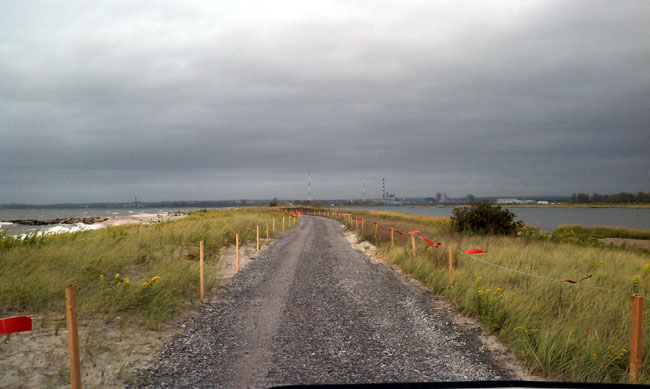
And then, things begin to look a little bit different. It is really hard to put into words, seems like some other country.
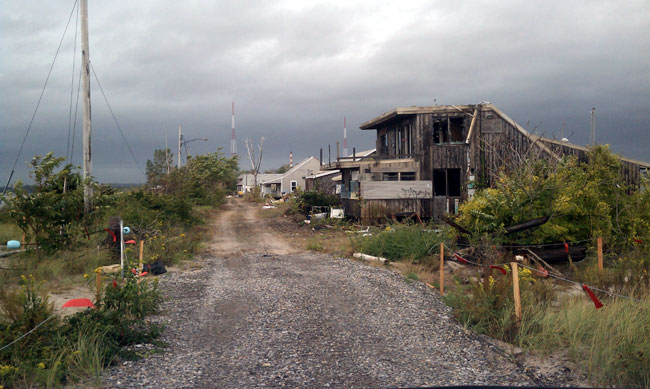
It turns out this is not quite the nice trip after all.
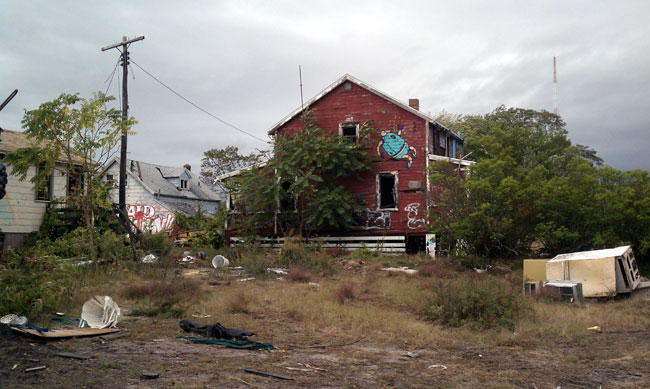
I’ve been to several so called “developing areas” like Port Au Prince, Hatti for example. Nothing ever looked this bad.
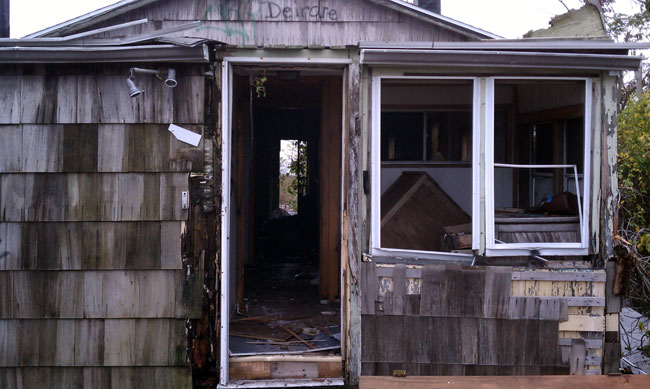
I can imagine some family coming here every summer to spend time at the beach.

What anarchy looks like.
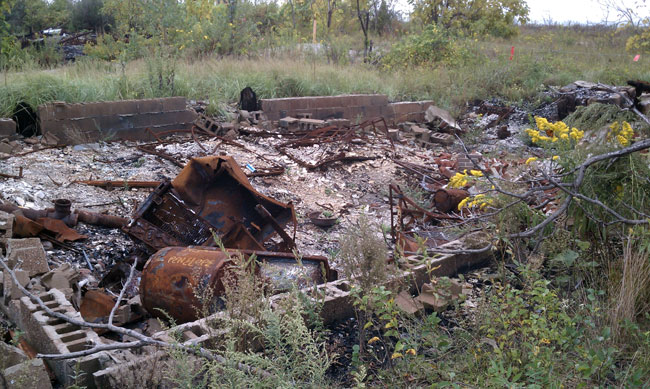
The back story is this: From the 1920’s up until 1996, Pleasure Beach was a nice seasonal oceanside bungalow colony, complete with an amusement park. These cottages (but not the land they were on) were owned by people from the surrounding cities and towns and the entire area appeared to be quite nice in it’s day. Then, in 1996, the wooden bridge that connected Pleasure Beach to Bridgeport burned. There are several theories; crackheads, radical environmentalist, etc. The city of Bridgeport did not rebuild the bridge, which meant the only access was by walking from the Town of Stratford beach parking lot, a trek of at least a mile or longer. In 2007, the town of Stratford decided not to renew these land leases, and the building owners were forced to remove any remaining items they wanted by barge. Soon thereafter vandals began walking down the peninsula from Stratford. Slowly, most of the bungalows were broken into and several were burned. This is mostly the work of “kids,” who, because they are under the age of 18, get a slap on the wrist and returned to their parents. Oh, those wacky kids, what will they do next?
Truth be told, they should be the ones out here cleaning this up, for free.
Finally, this year, the city began tearing down and cleaning up the remaining buildings, trying to put the former bungalow colony “back to nature.”
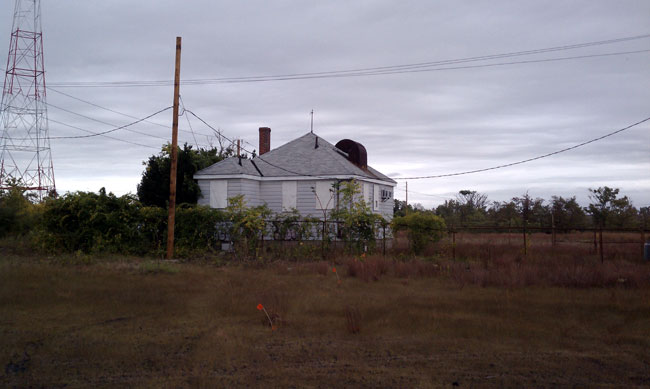
The transmitter site for WICC moved here in 1932. This building contained a nighttime operating studio, kitchen, bathroom, and bedroom. I can imagine hanging out here some summer night, spinning tunes and having a good time. The former amusement part is just out of the picture to the left. At the amusement park, there was a carousel, a big snack bar, a dance hall, and an area for portable rides like Ferris Wheels and such.
Now the building is full of disused gear, old carts, transmitter and tower parts, the water has been shut off and I’d not want to be out here at night under any circumstances.
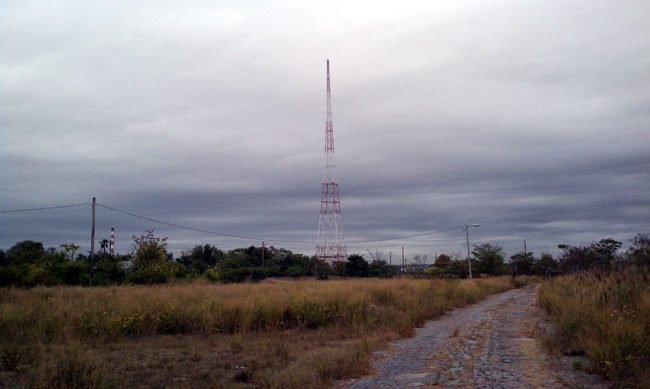
The antenna array consists of two 300-foot Milliken towers, originally from WNAC. Many people mistakenly think these are Blaw-Knox towers. Milliken preceded Blaw-Knox by several years. They built and designed towers around the world for radio and electric transmission. In the late 1930’s they were bought out by Blaw-Knox, which kept the design. I love these tapered self supporters, they have survived several major Hurricanes since 1932. The south tower is about 150 yards from the Long Island Sound. Salt air seems to do them no harm, either.
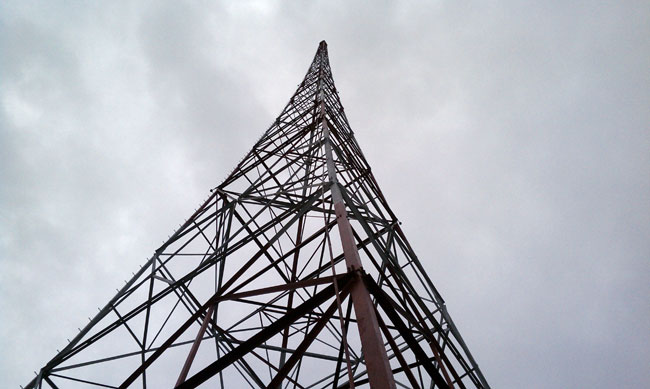
The station operates at 1 KW day, 500 watts night, DA2. The towers are 60 degrees tall, space 149 degrees. That is a little short, however, they are surrounded by salt water, so the signal goes like gangbusters. Because they are short, the impedances are low, about 10 ohms for nighttime and 30 ohms for daytime. Since the towers are so wide, the impedances are flat far beyond 50 kHz on either side of the carrier, which makes it a nice broad-banded antenna system. The 1932 phasors and ATUs were redone in 1972. All of the common point impedance measurements are still posted on the wall.
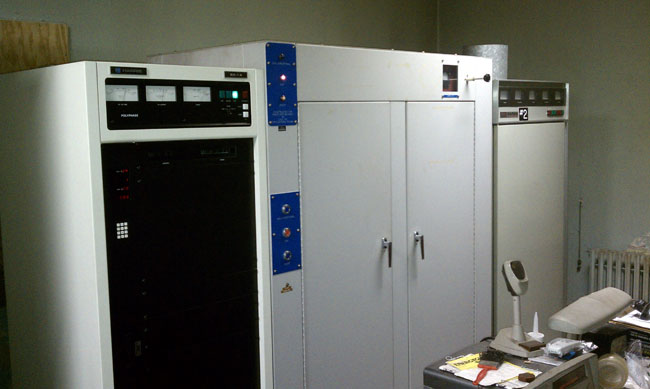
The main transmitter is a 1990 Harris model SX-1A. It seems to be reliable enough, my experience with the SX-1 is it has an overly complicated control system. The backup is a Harris BC1H, a sort of hybrid solid-state tube unit, which is also reliable.
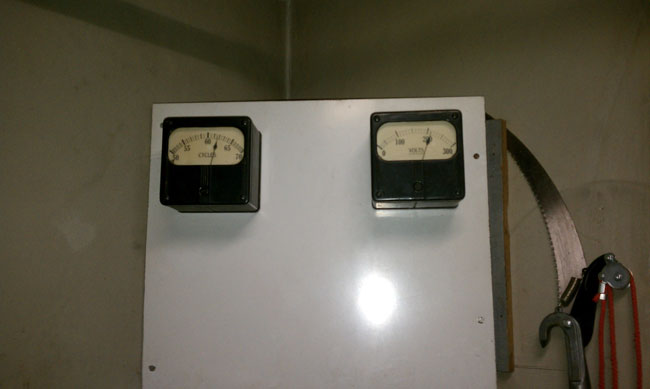
This high tech test and measurement center is attached to the incoming electrical service. Over the years, there have been some quality control issues with the incoming electrical service, mostly due to Osprey building nests on the cross arms. During rain storms, these nests catch on fire and kill the power to the site. The power company is in the process of redoing the electrical service to the building.
This is a video of the former amusement park and cottages shot two years ago, when the cottages were more or less intact. It is a bunch of stills set to Pink Floyd music:
Looks like they all just got up and left.
